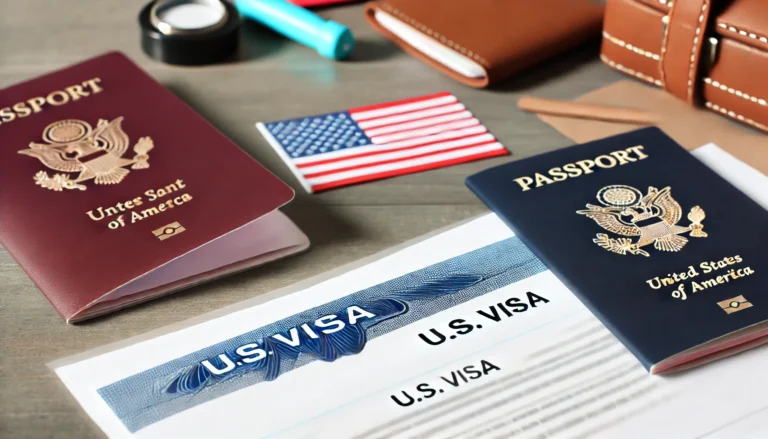Understanding Work Visas (H-1B, L-1, O-1)
Introduction
The United States offers several work visa categories for foreign nationals who wish to live and work in the country. Among the most common are the H-1B visa for specialty occupations, the L-1 visa for intra-company transferees, and the O-1 visa for individuals with extraordinary ability. Each visa category has specific eligibility criteria, application processes, and restrictions. This guide will help you understand the distinctions and requirements for each type of work visa.
Understanding Work Visas (H-1B, L-1, O-1)
H-1B Visa: Specialty Occupations
What Is the H-1B Visa?
The H-1B visa is a non-immigrant visa that allows U.S. companies to employ foreign workers in specialty occupations. These positions typically require a higher education degree or its equivalent in a specific field. Common fields for H-1B workers include:
- Information Technology (IT)
- Engineering
- Mathematics
- Medicine
- Education
Eligibility Requirements
To qualify for an H-1B visa, you must meet the following criteria:
- Job Offer: You must have a job offer from a U.S. employer who is willing to sponsor your visa application.
- Specialty Occupation: The job must qualify as a specialty occupation, requiring at least a bachelor’s degree or equivalent experience in the field.
- Employer’s Compliance: The employer must file a Labor Condition Application (LCA) with the Department of Labor, ensuring fair wages and working conditions.
Application Process
- Obtain a Job Offer: Secure a job offer from a U.S. employer willing to sponsor your visa.
- Employer Files LCA: The employer files an LCA with the Department of Labor.
- File Form I-129: The employer submits Form I-129 (Petition for a Nonimmigrant Worker) along with the approved LCA to U.S. Citizenship and Immigration Services (USCIS).
- Visa Application: Upon approval, you can apply for the H-1B visa at a U.S. Embassy or Consulate.
Duration of Stay
The H-1B visa is typically valid for three years, with the possibility of extension for up to six years. In some cases, further extensions may be granted if you are pursuing permanent residency.
L-1 Visa: Intra-Company Transferees
What Is the L-1 Visa?
The L-1 visa is a non-immigrant visa that allows U.S. companies to transfer employees from foreign offices to their U.S. offices. This visa is divided into two categories:
- L-1A: For managers and executives.
- L-1B: For employees with specialized knowledge.
Eligibility Requirements
To qualify for an L-1 visa, you must meet the following criteria:
- Employment with a Foreign Company: You must have been employed by a foreign company for at least one continuous year within the last three years.
- Transfer to a U.S. Office: The U.S. company must be a branch, parent, affiliate, or subsidiary of the foreign company.
- Managerial or Specialized Knowledge Role: You must be transferring to a managerial/executive position (L-1A) or a role requiring specialized knowledge (L-1B).
Application Process
- Employer Files Form I-129: The U.S. employer must file Form I-129 with USCIS, along with supporting documents proving eligibility.
- Visa Application: After approval, you can apply for the L-1 visa at a U.S. Embassy or Consulate.
Duration of Stay
The L-1A visa is valid for up to seven years, while the L-1B visa is valid for up to five years. Extensions may be available depending on the circumstances.
O-1 Visa: Extraordinary Ability
What Is the O-1 Visa?
The O-1 visa is a non-immigrant visa for individuals who possess extraordinary ability in their field. This includes professionals in:
- Arts
- Sciences
- Business
- Athletics
- Education
Eligibility Requirements
To qualify for an O-1 visa, you must demonstrate extraordinary ability by providing evidence such as:
- Awards or recognition in your field
- Membership in prestigious organizations
- Published articles about you or your work
- Significant contributions to your field
Application Process
- Employer or Agent Petition: An employer or an agent must file Form I-129 on your behalf, demonstrating your extraordinary ability.
- Supporting Documentation: Provide evidence of your qualifications and achievements in your field.
- Visa Application: Once USCIS approves the petition, you can apply for the O-1 visa at a U.S. Embassy or Consulate.
Duration of Stay
The O-1 visa is granted for the duration of your event, performance, or activity, up to three years, with the possibility of extensions in one-year increments.
Important Tips for Work Visa Applicants
- Understand the Requirements: Familiarize yourself with the specific requirements and processes for the visa category you are applying for.
- Gather Documentation: Ensure you have all necessary documentation, including proof of employment, qualifications, and any required fees.
- Consult with Your Employer: Work closely with your employer’s HR or legal department to ensure all paperwork is completed correctly.
- Maintain Your Status: After obtaining your visa, be sure to comply with all regulations and requirements to maintain your status in the U.S.
- Plan Ahead: Visa processing times can vary significantly, so start your application process as early as possible.
Conclusion
The H-1B, L-1, and O-1 work visas provide essential pathways for foreign nationals to work in the United States. By understanding the eligibility requirements, application processes, and key considerations for each visa type, you can navigate the complexities of obtaining a work visa in the U.S.
For more information on work visas, visit the U.S. Citizenship and Immigration Services (USCIS) website.

